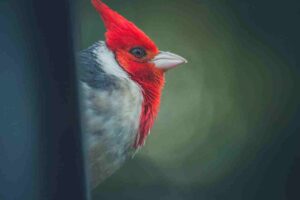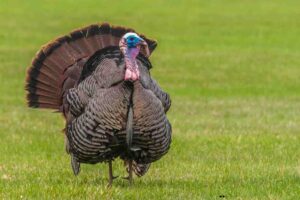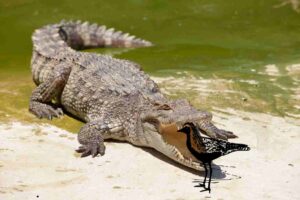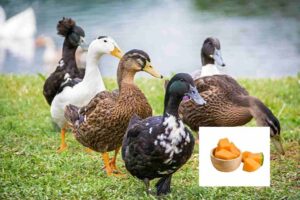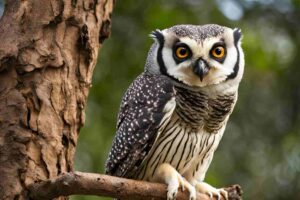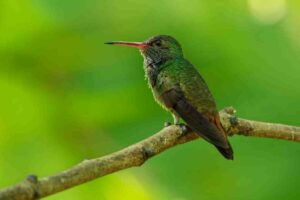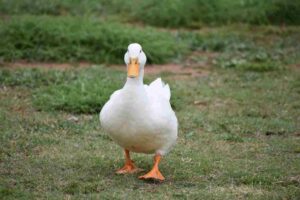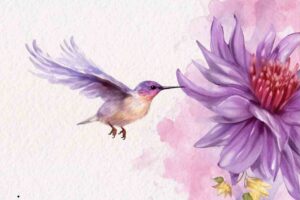Canadian geese, or Branta canadensis, are amazing creatures that inspire wildlife lovers and the more casual observer alike. They seem to float across lakes or to fly in their iconic V-formation. Among the most interesting questions about these birds is whether they have teeth. The answer may be obvious, but it says a lot about their anatomy, feeding behavior, and lifestyle. We will try to learn about the truth of Canadian geese and their “teeth,” along with other interesting facts, in this article.
Do Canadian Geese Have Teeth?

The short answer is no; Canadian geese do not have teeth. Birds in general do not have teeth. They possess unique adaptations that enable them to carry out similar functions necessary for eating and survival. For Canadian geese, what appears to be teeth are actually serrated structures known as tomia. Explore the tips of bird with me. One question that come in our mind is that Do Madagascar Owls Eat Snakes? all info in a blog.
Understanding Tomia
Tomia are also ridges of sharp, comb-like edges at the edge of the upper beak of the goose. The material consists of keratin, that compound that humans use for making their hair and nails. Being no more than real teeth, the tomia seem to fulfill the role by aiding in gripping and tearing of the geese food.
Key features of tomia include:
- Sharpness: They allow geese to cut through vegetation, which forms the majority of their diet.
- Grip: These ridges help geese hold slippery prey, such as small fish or insects, when necessary.
- Functionality: Tomia are especially useful for tearing apart tough plant matter like grasses and aquatic vegetation.
The Role of Tomia in a Goose’s Diet

The diet of Canadian geese mainly comprises aquatic plants. It eats insects or other small water animals occasionally. Some major diets include:
- Aquatic Plants: Geese tend to eat the plants that they can find in lakes or rivers such as algae or pondweed.
- Grasses: Geese often tend to feed on grass that they can see near water sources or fields.
- Grains: As it moves, it eats grains within agricultural fields while migrating. Tomia tear through such materials.
Unlike mammals, which grind food with molars, geese swallow their food whole and let their gizzard-a specialized stomach organ-handle the grinding process.
Do Tomia Pose a Threat?

Though typically nonaggressive, Canadian geese can become territorial in their nesting season. These geese are capable of producing a painful pinch with the toma in their beak when they feel threatened or when protecting their young, especially with such powerful beaks combined with the serrations of the tomia. What Is a Group of Turkeys Called? Read all info about turkey.
Goose Tomia to Teeth
To better understand the differences between tomia and true teeth, consider the following:
| Feature | Goose Tomia | Mammalian Teeth |
|---|---|---|
| Material | Keratin | Enamel and dentin |
| Purpose | Gripping and tearing | Chewing and grinding |
| Regeneration | Continuous growth possible | Limited growth |
| Appearance | Serrated, comb-like ridges | Rounded or sharp structures |
This comparison highlights the unique adaptations of Canadian geese, showcasing how nature has equipped them with tools suited to their diet and environment.
The Evolutionary Significance of Tomia
Birds originated from theropod dinosaurs, many of which were toothed. Over millions of years, modern birds, such as the Canadian geese, evolved beaks and tomia as a lighter, weight-bearing substitute for teeth that can enable them to keep agility that will permit them to fly. Lacking teeth also cuts the metabolic cost of enamel production and maintenance in a significant way for animals such as geese that travel over long distances and have to return over time.
Behavioral Insights Related to Goose Tomia
Understanding the role of tomia can also provide insights into the behavior of Canadian geese:
- Foraging Habits: Geese often graze in flocks, using their tomia to clip grasses quickly and efficiently.
- Territorial Aggression: During nesting season, geese use their beaks as weapons, and their tomia enhance the effectiveness of their defensive actions.
- Preening: Tomia are also useful for preening, helping geese maintain their feathers in optimal condition.
Misconceptions About Geese and Teeth
It’s probably due to the intimidating appearance of their tomia that most people believe What Is a Group of Turkeys Called?. The serrated edges of their beaks resemble rows of sharp teeth when they open their beaks, especially when close. But it’s very important to note that these are part of their beak structure and not really teeth.
The Broader Implications of Goose Anatomy
The unique adaptations of Canadian geese reflect their amazing survival in diverse environments. From the ability to migrate to an effective feeding mechanism, these birds are a testament to how evolutionary ingenuity could function. The tomia on their beaks enable their survival but also illustrate a bigger principle: form follows function.
Conservation and Interaction with Humans
As Canadian geese typically spend time in urban and suburban environments, knowledge of their behavior and anatomy can foster mutual coexistence between humans and these birds. Learning, for instance, about the purpose of their tomia can eliminate myths and lead to respectful observation. Also, conservation efforts ensure that such adaptable birds continue to enhance ecosystems and provide an opportunity for education and wildlife appreciation.
Conclusion
While Canadian geese do not have teeth, their tomia are a functional and evolutionary replacement that allows them to feed effectively and defend themselves when necessary. These serrated structures, combined with other unique traits, make Canadian geese a great subject of study. Anatomical and behavioral knowledge about these birds gives an appreciation for the complexity and beauty of the natural world.

